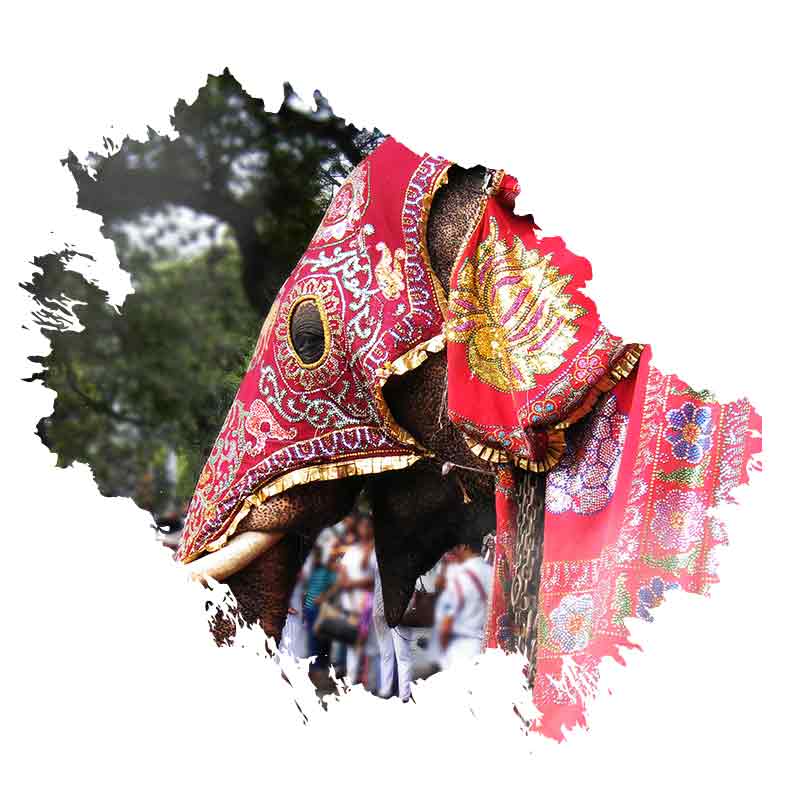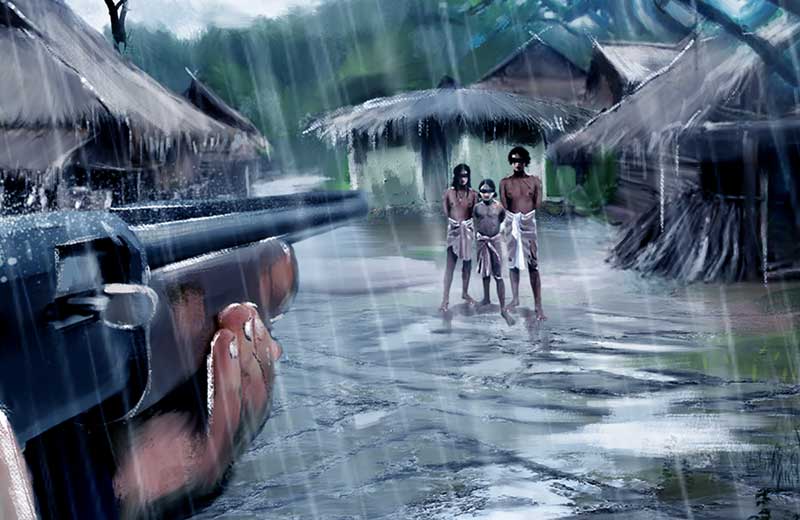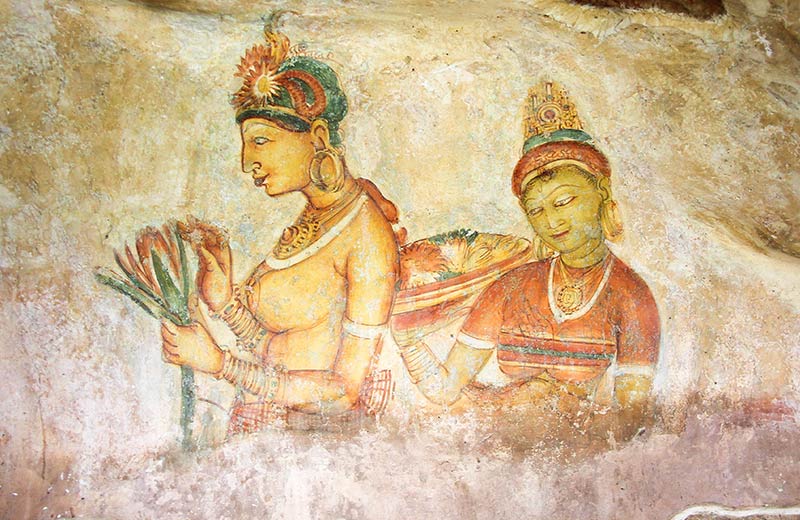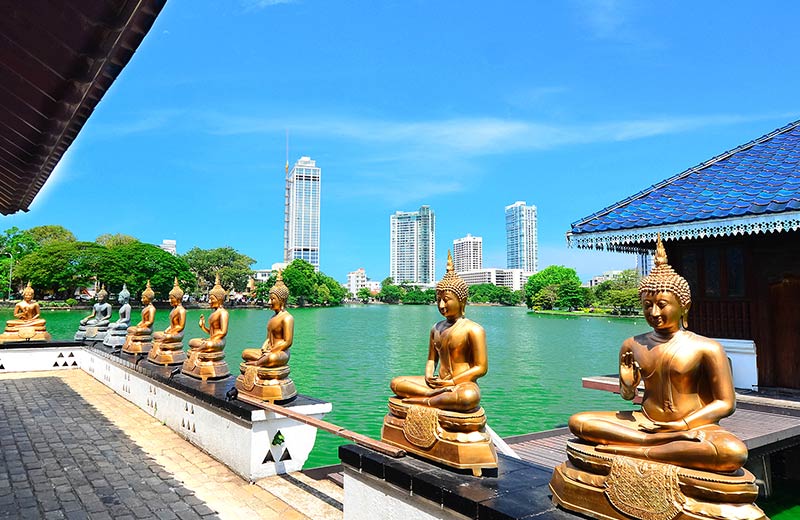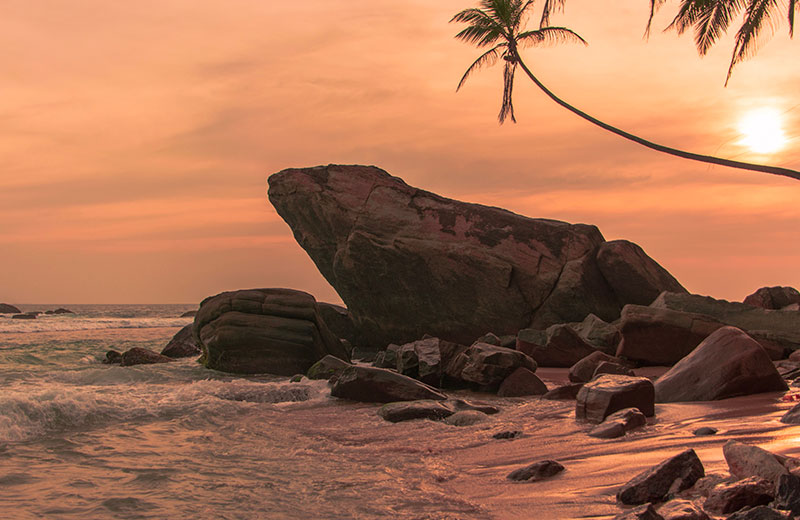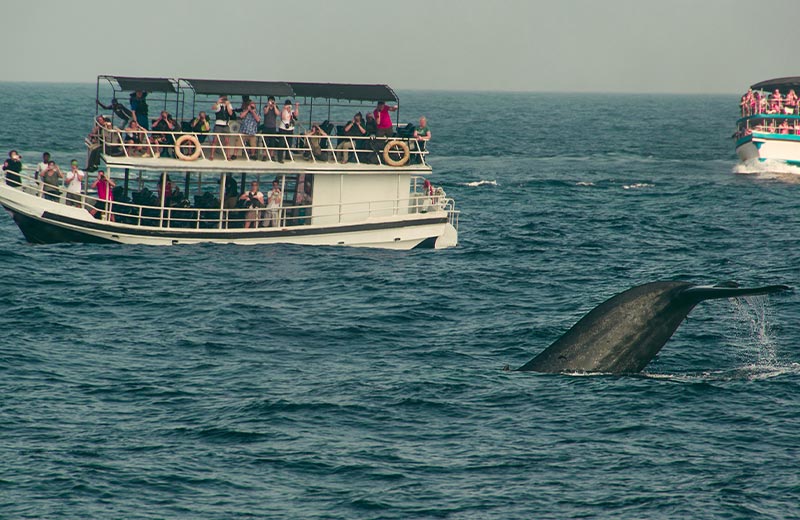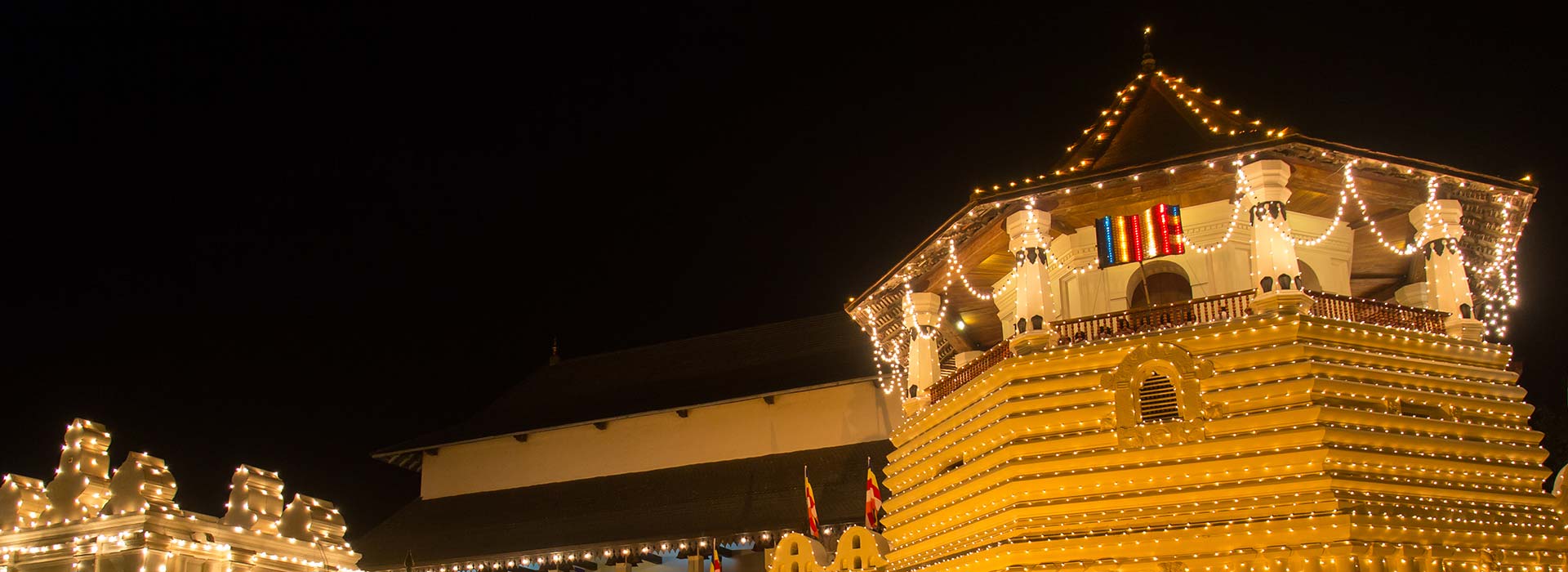Sri Dalada Maligawa
Built by the kings of old, the Sri Dalada Maligawa stands majestic and proud in the centre of the city of Kandy. It has withstood colonial occupation, political turmoil and terrorist attacks to shine as a beacon of the Buddhist world. The tooth relic, believed to be the left canine of Lord Buddha, is celebrated and paraded around the city annually in the famed Esala Perahera – a grand parade that showcases the culture of Kandy.
The temple is a rather large complex built in the typical Kandyan architectural style, with each component having an interesting tale. It is believed that the original structure was constructed by King Wimaladharmasuriya II, and that his successors added other buildings and features, resulting in the structure we see today.
Enter through the elaborate gates of the Sri Dalada Maligawa and walk along the Maha Maluwa (the great terrace), which once was a threshing ground of the large paddy fields that were subsequently turned into the Kandy Lake. It was here that spiritual solace was pursued by people of all creeds, castes and religions during the height of the Kandyan Kingdom. The Maha Maluwa was also a key centre for hosting festivals of great religious importance, and still serves as the starting point of the colourful pageant – the Esala Perahera.
Walk around the square and you will stumble upon three historical monuments that depict some of the most important figures in Sri Lankan history. On one side of the square, a lone stone pillar holds the skull of Keppitipola Disawe, who is immortalised as a national hero for standing up to the British in the 1818 Uva-Wellasa Rebellion. On either side of this pillar are two intriguing statues that depict Prince Danta and Princess Hemamala, who played a focal role in bringing the sacred Tooth Relic to Sri Lanka from a warring Indian state in the 4th century AD.
The temple serves as a vestige of royalty that ruled over the Kandyan Kingdom, as the peculiar looking ‘Paththirippuwa’ or octagonal pavilion just next to the ‘Mahavahalkada’ (main entrance) was made for the kings of old to showcase the sacred Tooth Relic, and also served as a front row seat for King Sri Vickrama Rajasingha to observe the vibrant Esala Perahera.
The further you walk into the main sanctum of the temple, you are met with more edifices of royalty. One such structure that stands out for its sheer simplicity is the ‘Magul Maduwa’ (audience hall). Commissioned by Sri Vickrama Rajasingha himself, the hall was designated as a place where religious and state festivities of the Kandyan Court took place. This hallowed hall was also the place in which the Kandyan Convention of 1815 was signed by the British and the Kingdom of Kandy, officially handing the rule of Sri Lanka over to the British Empire.
Before entering the next section – the Mahavahalkada – make sure to catch a glimpse of the Royal Palace on the northern end of the main temple and admire the well-preserved building. Finally, walk into the Mahavahalkada and be greeted with more typical Kandyan styled facades and intricate works of art. The paintings and drawings within the main temple depict a number of stories of the Lord Buddha and stories of significant events that occurred in Sri Lanka during the days of the monarchy.
The Tooth Relic is not the only object of interest at the Sri Dalada Maligawa, as the temple’s other complexes, especially the ‘Aluth Maligawa’ (new palace), which serves as a museum, houses other ancient Buddhist and historical artefacts. Some of these are the ‘Jathaka Tales’ of the Lord Buddha, antique jewellery, caskets, and even clothing belonging to King Keerthi Sri Rajasingha.
Esala Perahera
The Sri Dalada Maligawa is an important part of the famous Esala Perahera, which technically existed even before the sacred Tooth Relic was brought to the city of Kandy. Dating back to the 3rd Century BC, the Esala Perahera was initially a mass religious ritual in which the people of the city would pray for rainfall for a bountiful harvest. Once the sacred relic was brought and housed in the temple by King Wimaladharmasuriya I in the 16th Century, it was added to the procession to signify the power of royalty and the importance of Buddhism in the island.
What makes the Esala Perahera unique in comparison to any other religious processions in the world is the fact that it is a 10-day event of vibrant pageantry, complete with traditional dancers, whip crackers, fireball acrobats, and even the parading of elephants garbed in elegant costumes and lights.
The first five days of the procession are called the Kumbal perahera, and is an amalgamation of processions organised by the various ‘Devales’ (places of worship), namely the Natha, Vishnu, Katharagama, and Pattini Devales, in addition to the Maligawa Perahera. This procession is traditionally for the viewing of young children, as it is believed to help drive away evil spirits and illnesses. It is natural that you would hear the loud fire of cannons during the procession. Fret not, it is just the traditional way of signalling the order of the proceedings.
The last five days of the procession are called the Randoli Perahera, and it is the grander of the two processions. Animals, especially elephants, adorned in dresses of elegant designs lit up by sequins and lights, carry ornate palanquins on their backs. The casket containing the sacred Tooth Relic is placed in one of these palanquins. The Randoli Perahera is succeeded by a ‘Day Perahera’, which marks the ‘Diya Kapeema’ ceremony (water cutting ceremony), finally closing the festivities.
It is widely noted by many travellers that anyone who doesn’t visit the sacred Temple of the Tooth Relic has not really visited the city of Kandy at all!
